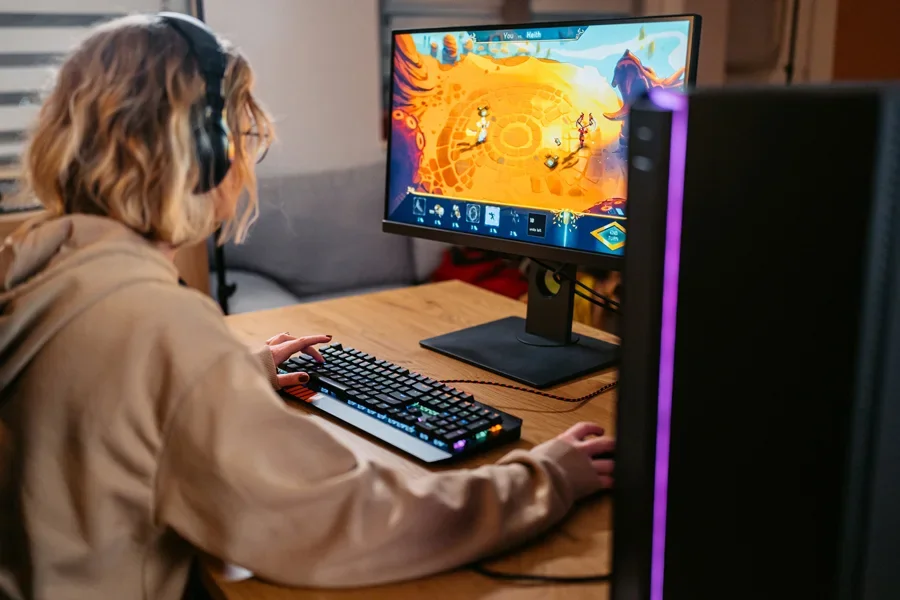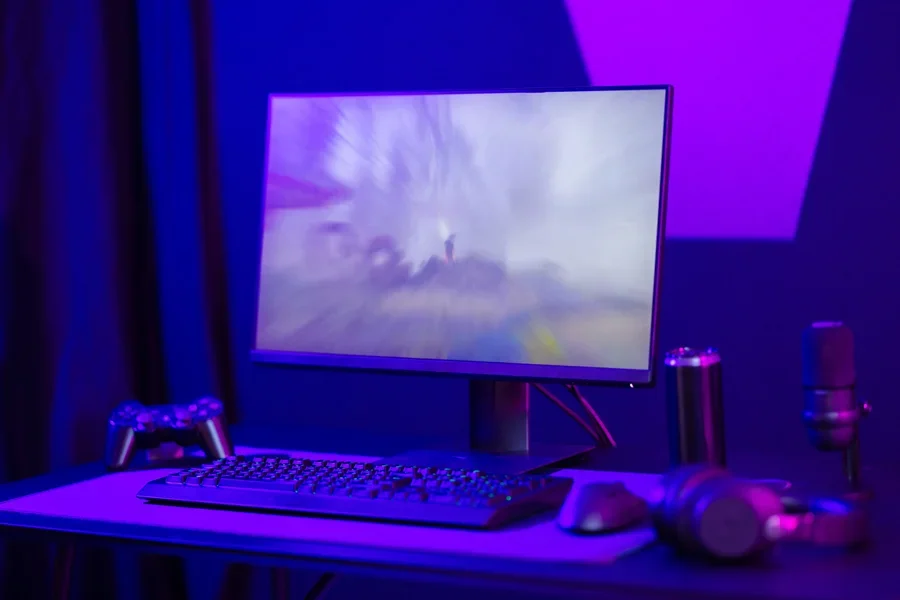From enhancing work productivity to improving gaming experiences or simply watching movies, portable monitors are an excellent solution for addressing various IT scenarios, ranging from mobile use to multitasking. Perfect for those who need to manage multiple windows simultaneously without losing precious seconds between continuous switches, these extra screens can also easily connect to laptops, tablets, and smartphones for watching content or gaming sessions on the go.
However, not all portable monitors are the same. The monitor, together with the keyboard, is one of the fundamental components of gaming. Portable gaming monitors should feature an excellent graphics card and correctly reproduce the action without losing image quality, thus offering a smooth and engaging gaming experience.
In this article, retailers and shop buyers will discover the best portable monitors to stock and sell to their gaming customers, as well as the key characteristics they should look for.
Table of Contents
Different types of portable monitors
Portable gaming monitors: What to look for
Resolution
Refresh rate
Response time
Other portable gaming monitor technologies
Final thoughts
Different types of portable monitors

According to Future Market Insights, the portable monitor market is experiencing significant growth. Currently valued at USD 184.9 million, the industry is projected to increase at an impressive CAGR of 18.4% to reach USD 2,118.4 million by 2035.
Three types of portable monitors are competing in this trend, categorized based on the user’s needs. Each type shares specific characteristics among the various models, which can be very useful for the primary purpose for which this accessory is intended.
Portable monitors for productivity typically range from the smallest (12 inches) to the largest (16 inches). They connect via USB-C ports and serve as a second screen for studying, working remotely, or on the move, allowing users to keep track of multiple online pages or expand their view when editing video or producing audio content.
Portable gaming monitors typically have slightly larger average screen sizes, ranging from 15.6 to over 17 inches, and they also offer resolutions beyond full HD. To provide an enhanced gaming experience, they feature high refresh rates (even 240 Hz) to achieve smoother and more engaging images, as well as low response times for reduced latency and improved performance in multiplayer. They can also include a built-in battery that is autonomous from the power supply and built-in speakers to reproduce multimedia content.
Hybrid portable monitors are positioned halfway between productivity and gaming applications, featuring generous diagonals of 15.6 inches or larger, full HD resolution, and a decent refresh rate.
Portable gaming monitor: What to look for
The essential features consumers consider before purchasing a portable gaming monitor are resolution, refresh rate, response time, anti-trading technologies, the different types of panels, and connectivity options. Let’s take a closer look at some of these below:
Resolution

Resolution refers to the number of pixels that make up the display, with options ranging from Full HD (1080p) to Quad HD (1440p) to Ultra HD (2160p, also known as 4K). This is one of the key aspects of gaming monitors as it directly affects the visual quality and rendering of games on the screen.
Full HD is the starting point for gaming monitors, ideal for those seeking to strike a balance between image quality and performance. Quad HD offers a sharper image than Full HD and is perfect for gamers who want greater graphic details without sacrificing performance. Ultra HD delivers maximum image clarity and detail, creating an immersive gaming experience. T
Gamers choose the proper resolution depending on the type of experience they want to achieve, their hardware capabilities, and even the game they want to run. A good compromise for many gamers may be a monitor with a 1440p resolution and a 144Hz refresh rate, which strikes a balance between image quality and performance.
Higher resolutions require more processing power from your graphics card, which can impact performance. To maintain smooth gameplay, it is recommended to use the monitor’s native resolution.
Technologies such as Vertical Sync (VSync) synchronize the frame rate of games with the monitor’s refresh rate, preventing screen tearing and ensuring smooth playback. Texture filters and antialiasing improve the visual quality of games by reducing the appearance of jagged edges and improving texture rendering. However, keep in mind that more advanced features require more processing power.
Refresh rate

A monitor’s refresh rate is measured in hertz (Hz) and refers to the number of times per second the image on the screen is updated. For a smooth and frictionless gaming experience, a monitor with a refresh rate of at least 120 Hz is recommended. Even higher refresh rates, such as 144, 165, 240, or 360 Hz, can be considered for high-speed games.
It is essential to ensure that the graphics card installed in the user’s device supports high frame rates to utilize a high refresh rate fully.
Response time

Response time measures how quickly a pixel can change color or hue, with an ideal value ranging between 1 and 5 milliseconds (ms) for portable gaming monitors. A low response time reduces motion blur and ghosting, improving the clarity of fast-moving images. Panel technology significantly affects response time.
TN panels are renowned for their rapid response times (1 ms or less), making them ideal for competitive gaming. In contrast, IPS panels offer better color accuracy and wider viewing angles, but with slightly slower response times.
Other portable gaming monitor technologies

When choosing a gaming monitor, technologies like NVIDIA G-SYNC and AMD FreeSync play a crucial role, as they are designed to eliminate screen tearing. This visual defect occurs when the monitor’s refresh rate is not synchronized with the graphics card’s frame rate.
NVIDIA G-Sync is a hardware-based technology that requires specific monitor and graphics card components. It offers better control, lower input latency, and superior color and motion blur calibration.
G-Sync Ultimate supports HDR content and a wider color range, but requires more expensive monitors. In contrast, the certification G-Sync Compatible refers to FreeSync monitors that have been tested and validated by NVIDIA to work with G-Sync, offering a more affordable option without the need for a dedicated chip.
AMD FreeSync is a software-based technology that utilizes DisplayPort’s Adaptive-Sync standard, making it generally less expensive to implement than NVIDIA’s G-Sync.
The choice between the different technologies depends on various factors including budget, system specifications, and the customer’s preference. While high-end setups may benefit more from G-Sync due to its superior control and lower latency, FreeSync offers a better compromise between cost, quality, and gaming experience in most situations.
Final thoughts
A portable gaming monitor is a powerful tool for immersive gameplay. Choosing the correct resolution, panel type, and connectivity combination ensures top-tier performance wherever you are.
For retailers, investing in high-quality portable gaming monitors means tapping into a rapidly growing market of mobile gamers seeking flexibility without compromising quality.




